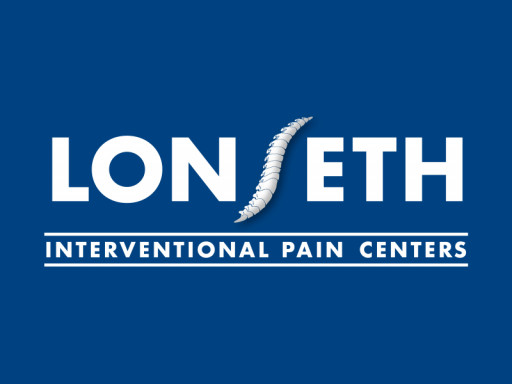Health - Trend Magazine originally published at Health - Trend Magazine
Increasing Application of Activated Carbon for Water Treatment Solution to Escalate Activated Carbon Market Growth During 2021–2028
NEW YORK, UNITED STATES, April 1, 2022 /EINPresswire.com/ — The scope of The Insight Partners recent study on the “Activated Carbon Market Forecast to 2028 – COVID-19 Impact and Global Analysis – by Type and Application,” consists of the factors fueling market growth, revenue estimation, and market share analysis. It also includes the identification of significant market players and their key developments.
The activated carbon market is projected to grow from US$ 4,350.6 million in 2021 to US$ 8,264.0 million by 2028; it is expected to grow at a CAGR of 9.6% from 2021 to 2028.
Download sample PDF Copy of Activated Carbon Market study at:
Activated carbon is obtained from coal, wood, peat and is also known as activated charcoal. The adoption of circular economy for sustainability is major trend followed by many countries. The urban wastewater treatment plants (WWTPs) plays vital role in circular sustainability with recovery in resources and production of energy. Activated carbon is widely used in manufacturing of industries for treatment of waste water and recovery of materials which can be reutilized for further process. The powdered activated carbon is one of the most convenient type for purification of wastewater the reason being the impurities in the water can be removed with help of simple filtration processes and the material can be obtained from bioresources and can be inexpensive compared to other technologies. Surge in global population and rising industrialization holds responsible for growth of global water treatment industry which, is expected to propel the activated carbon market in the near future.
The increasing demand for water resources due to water scarcity in Asia for agricultural, municipal, industrial, and household use have forced government of several countries to emphasize on waste water treatment technology for reuse of treated water. There is a deterioration in water quality and water shortages in many places due to the scarcity. According to European Union the large scale industries with massive production capacities such as chemical industry, iron & steel, and pulp & paper industry have higher proportion of waste water generated after production process. This industries requires on-site capacity to treat wastewater before release in the environment. Therefore, it has become increasingly important to treat the wastewater. This factors led to driving demand for waste water treatment which, in turn, holds responsible for driving activated carbon market.
In 2020, Asia-Pacific accounted for the largest share in the global activated carbon market. Steady growth in the population coupled with the growth in industrialization in the countries cause water contamination. Therefore, growing awareness of environmental pollution and government regulations to prevent water pollution and control action plans have increased the demand for water treatment in recent years which, in turn creates lucrative opportunities for the activated carbon market in the region. Further, growing dominance as well as higher production rate of automotive, and the easy availability of raw materials boost the growth of the activated carbon market in Asia-Pacific.
Inquire for Discount on Activated Carbon Market:
Activated Carbon Market: Competitive Analysis
The major key players operating in the global activated carbon market include Osaka Gas Chemical Co Ltd; Kuraray Co., Ltd.; Haycarb (Pvt) Ltd.; Cabot Corporation; Kureha Corporation; Activated Carbon Technologies Pty Ltd; Albemarle Corporation; CPL Activated Carbons; Jacobi Carbons Group; Calgon Carbon Corporation; and James Cumming And Sons Pty Ltd.
Activated Carbon Market by Application
Based on application, the global activated carbon market is segmented into water treatment, food & beverages, pharmaceuticals, automotive, and others. The water treatment segment held the largest market share in 2020. Activated carbon is increasingly used in service water treatment, groundwater rehabilitation, and drinking water treatment. It is also used in treatment of industrial wastewater to recover useful materials and the same treated water is further consumed for manufacturing use.
Impact of the COVID-19 Pandemic on Activated Carbon Market
The global economy have been hit hard due to the COVID-19 pandemic. Governments of various regions are taking possible steps to restrict the spread of SARS-CoV-2 by announcing country-wide lockdown, which directly impacts the growth of industrial sectors. Many automotive and pharmaceuticals manufacturers faced challenges procuring activated carbon. Moreover, supply constraints have significantly raised the costs of activated carbon. The COVID-19 pandemic had a significant impact on manufacturing industries across the globe, with a huge decline in the production process. However, the market has recovered due to the rising demand for activated carbon.
Order a Copy of Activated Carbon Market Share, Strategies and Forecasts 2021-2028 Research Report at:
In 2021, Asia Pacific held the largest share of the global activated carbon market. China and India are the two leading producers of activated carbon across the world. In India, the activated carbon production industry is among the fastest-growing ones. The growing industrialization in this region, coupled with rise in government initiatives for treatment of industrial waste, has fueled the consumption of activated carbon extensively.
About The Insight Partners
The Insight Partners is a one-stop industry research provider of actionable solutions. We help our clients in getting solutions to their research requirements through our syndicated and consulting research services. We are specialists in industries such as technology, media, food & beverages, chemicals & materials, and telecommunication.
Press Release: https://www.theinsightpartners.com/pr/activated-carbon-market
More Research:
Contact Us:
Sameer Joshi
The Insight Partners
email us here
Visit us on social media:
Facebook
Twitter
LinkedIn
Health - Trend Magazine originally published at Health - Trend Magazine
 ,
,



